Still life photography tips every aspiring still life photographer needs to know.
A great aspect of shooting still life photos is you don’t need a model, expensive gear, or special props, to get started in still life photography. This type of photography is user-friendly, and there are ample resources available to help you master the craft faster without dropping much sweat.
In this article, you’ll learn how to shoot still life photography, three simple still life composition tips that many beginner still life photographers often overlook, and many more.
14-day free trial. No credit card required.
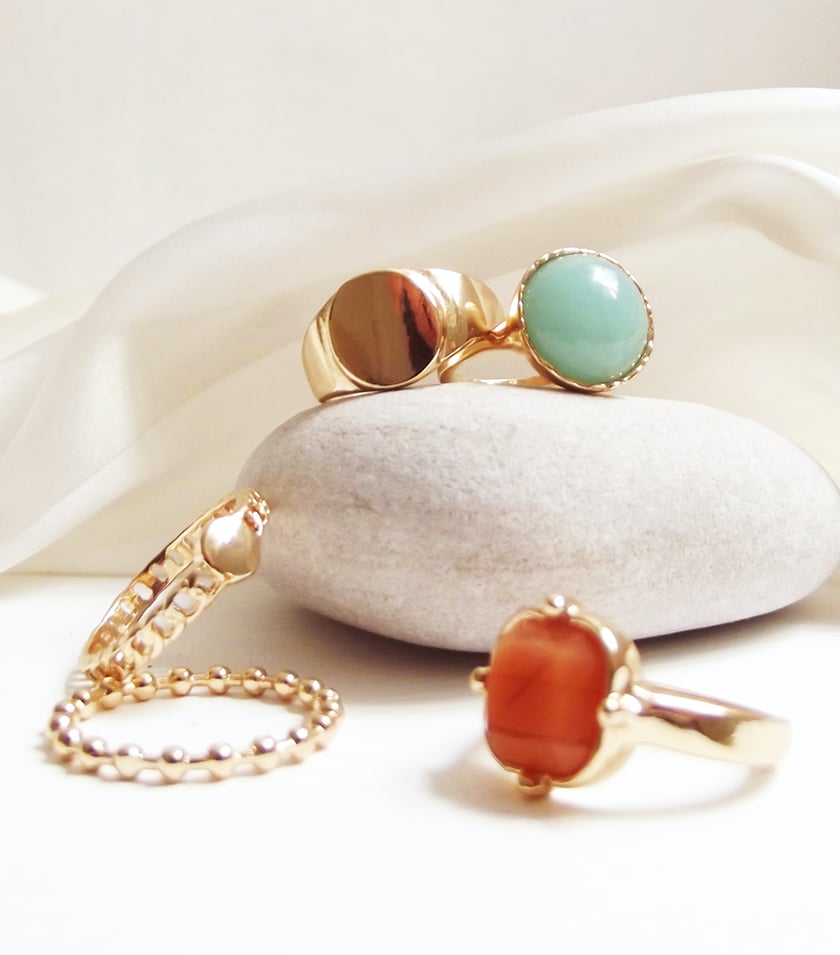
Introduction: beginner simple still life photography.
Three elements make up a photograph: subject, light, and composition. In still life photography, photographers use lighting and the staging of the objects to use inanimate subjects to communicate a concept or narrative, while making it visually interesting.
Beginner still life photographers should always be mindful of how these three elements interact with each other.
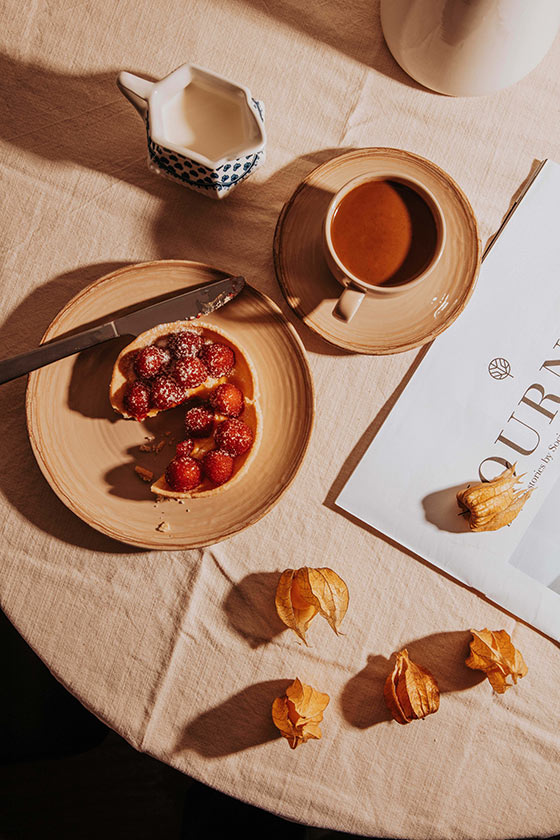
Subject.
Subjects used in still life photography are often items you find in everyday life. They can be as simple as tools, food, plates, stationary, bottles, vases, cups, and anything available to you.
When you place your objects in interesting positions, think about what they communicate, juxtapose them against each other you’ll find your photographs take on a whole new look. Feel free to experiment with different colored objects in different backgrounds, and take a photo in landscape or portrait positions.
If you are struggling to find still life photography inspiration, try searching “still life paintings” on the Internet to get a good idea of how to arrange your photo. There is an endless array of inspirations, and you can find a painting that utilizes subject matters with sizes similar to the ones you have.
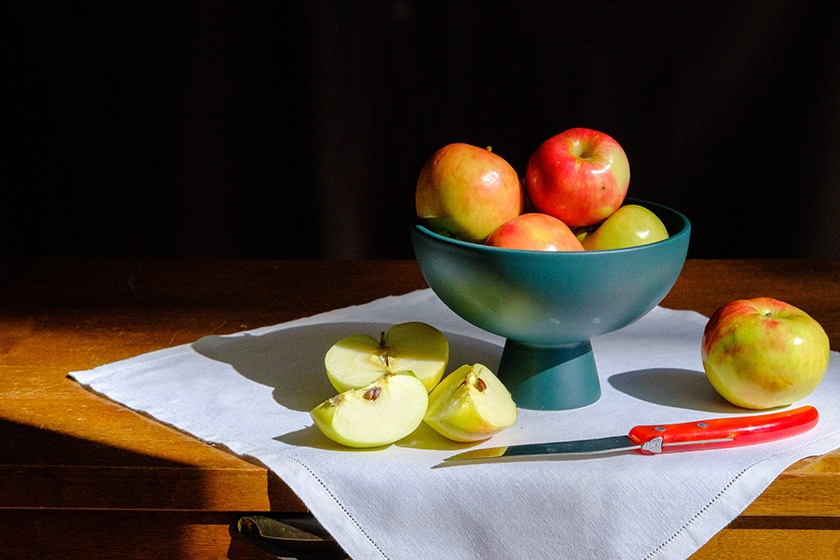
Still life photography lighting.
The light sources in still life photography can be either natural and studio lighting. Lighting is crucial in still life photography and its positioning will either make or break your photos.
Natural light is an excellent lighting source to create a soft diffusion when it’s filtered through a window or modified with a sheer curtain. Hard sunlight can create beautiful reflections and shadows on the images and enhance the composition if you frame it just right.
Unlike natural sunlight, studio lighting is more reliable and can be easily manipulated to your liking for still life photography. Studio lighting is often the choice of lighting to use for a dark and moody theme in product images. You could modify the lighting by adding honeycomb grids to your softbox if you want it to be directional and contrasting.
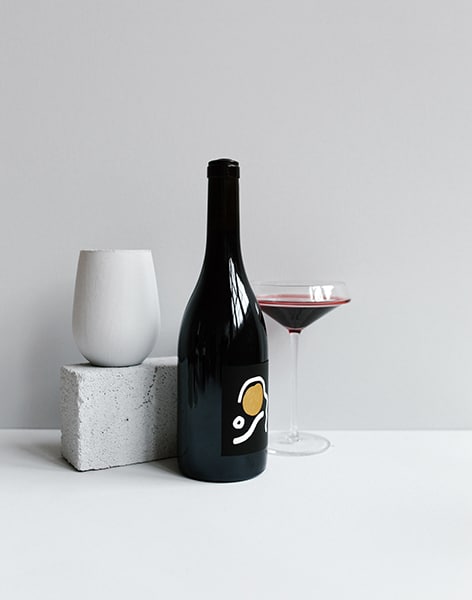
Composition.
Strong composition will make your still life photographs look interesting and more pleasing to the eye. Composition refers to how you place (compose) the subjects together and arrange them across the scene.
A simple concept of composition in still life photography is to keep the viewer in the picture by guiding their eye around the frame. The key to successful still life photography with great compositions is to deliver information, invoke emotion, and hold the viewer’s attention so they’ll want to pause and study the image.
You could gauge how compelling your images are by how long the viewer wants to look at them. A telling sign that your still-life photographs could have stronger composition is when you notice the viewer is easily distracted or driven out of the image.
Build a still life photography portfolio that attracts dream clients.
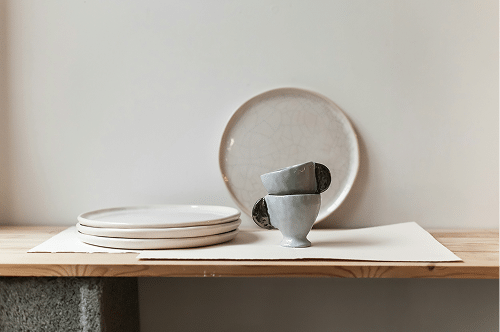
Three still life composition tips.
The composition techniques used in still life photography are very similar to the ones used in painting. The setup for still life photography is to create the center of interest in which the horizontal and vertical lines intersect.
Here are three still life compositions tips for beginners.
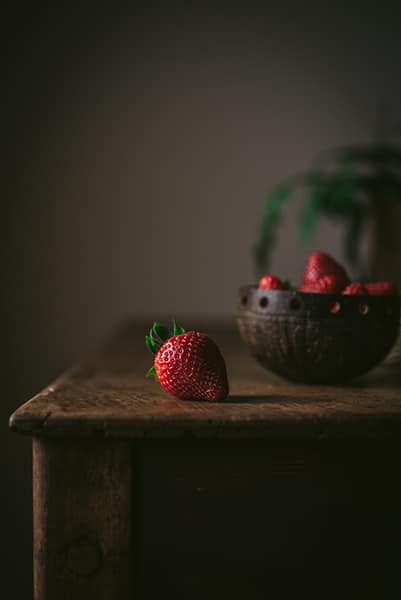
Use a hero object.
You can use a hero object in still life photos by leading your viewer’s eyes toward it. A hero object might stand out in an image by its bright colors when placed in relatively dull-colored surroundings, or by using the shapes of the objects to create lines that guide the viewer to the hero object. It’s a composition technique that helps the viewers quickly find the focal subject when viewing the photo.
A hero object works well when placed in opposing diagonals to achieve balance. Surroundings with similar colors arranged diagonally will help enhance it.
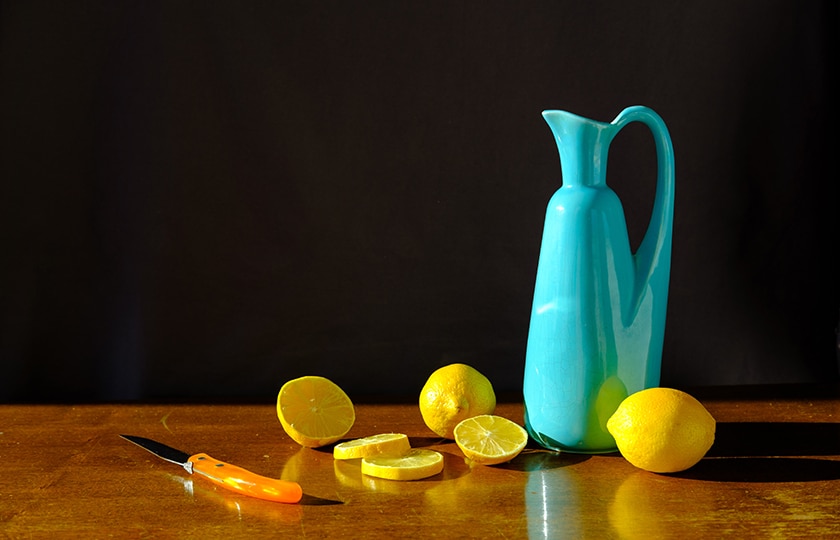
Rule of thirds still life photography.
In still life photography, the rule of thirds means you’ll divide your image (frame) into nine equal rectangles by drawing two imaginary horizontal and vertical lines. You will then place your subject on those lines or at the intersection of those two lines.
Avoid leaving too much space on one side of the image when using the rule of thirds, because it will look imbalanced as a whole. When in doubt, go with what your gut tells you.
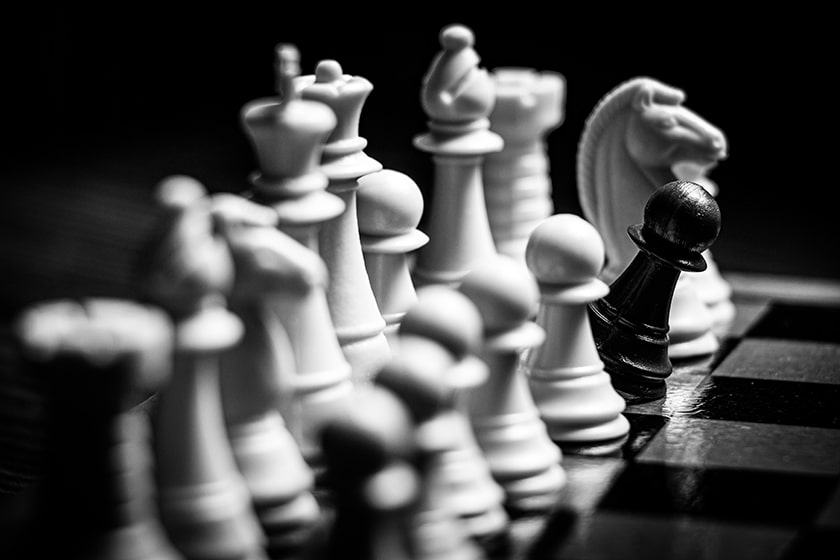
Leading lines in still life photography.
Leading lines in still life photography are visual pathways to the subjects by leading your viewer’s eyes through the frame. Leading lines are elements in the environment and exist in building walls, roads, bridges, tree lines, and anything in the surroundings. With still life photography you can use the objects in the scene to create this same effect.
Leading lines direct the attention to the subject and make it the focal point. Leading lines also don’t need to be straight ones and can be combined with the rule of thirds or other composition techniques.
Still life photography camera settings.
In still life photography, the subject usually stays put. There isn’t much movement from the subject other than the one from your camera.
Here are the recommended camera settings to consider:
ISO.
When it comes to ISO the higher the value the more noise in your files. Setting the ISO to 100 is ideal, to keep the noise as low as possible in still life photography. The higher the ISO number, the grainier photo is going to look. You can increase the ISO depending on the type of effects you want to have or on the amount of light available. Feel free to push your ISO higher if you need to make your sensor more sensitive due to low light.
Aperture.
Aperture controls the depth of field in you images. Remember that the shooting “wide open” on the lowest aperture value (such as f/1.4) will create a shallow depth of field, meaning there will be a very fine area of the image that’s in focus while the rest will be blurred in the foreground and background. Using a higher aperture value (such as f/8 -f/16) is a much better option with still life photos when its important to keep the entire scene in focus. A smaller aperture will also mean less available light reaches your sensor so you will need to compensate with a higher ISO or slower shutter speed. Experiment with your aperture settings as using a wide aperture could create some really interesting and artistic effects to capture the viewer’s interest.
Shutter Speed.
Fast shutter speed (< 1/1000 second) is good to capture fast movements of the subject. A slower shutter speed is much better for still life photography due to the ‘stillness” of the subject. You can try a slower shutter speed like 1/60 second (or even slower) and use a tripod to prevent camera shake. Since you have the option to take extra time with each frame while your camera is mounted on a tripod, you will have more flexibility with the other exposure settings to really dial in the look you want to achieve.
Black and white still life photography tips.
Black and white still life photography, utilizes light, shadow, and tones to communicate a feeling, emotion, or concept in the photos. Oftentimes, the use of black and white instills a feeling of nostalgia or memory in the viewer.
Follow these ten useful black and white still photography tips to thrill your viewers.
- Tripods and remote releases: Consider getting a tripod for black and white still life photography shoots. Tripods will both save you from those shaky hands and they’ll free up your time so that you can focus on perfecting other elements surrounding the subjects. Remote releases come in handy when you don’t have an extra hand to assist.
- Flash: You can use flash when you are shooting black and white still life photographs. Flash can assist with proper exposure and be used to create definition or drama, depending where it is positioned in relation to your subject and background. Correctly used, flash can enhance the subject’s texture. Don’t be afraid to experiment with different angles and learn to create a mood.
- Play with lighting: You have more flexibility with lighting when shooting black and white still life photography in the studio because the color of the light plays less of a role. Cut out a piece of foam board into the form of a window, place it next to the subject, and shine a light through it to mimic natural light and give your black and white still life photos an elegant look.
- Pick a few simple compositions: All you need is a couple of simple compositional tools like the ones we mentioned above – try sticking to them throughout your still life shoot. The rule of thirds and hero objects are good composition combinations. If you aren’t sure about your composition, try removing some items from the frame, then look at it again. Sometimes less is more!
- Train your brain to think in black and white: Visualize how an object will look in black and white before taking the photos. This will guide you in determining which detail of the subject you want to focus on and help determine which gear to use accordingly. Visualization in your mind saves a lot of time in shooting.
- Shadows are your friends: Depending on the positioning of the lighting you can create strong and compelling shadows that will work well in black and white still life photographs. Shadows add drama, mystery, and contrast, and draw the viewer into the image due to their dark and grey attributes. Using them well could add mood and emotions to the photographs.
- Highlight textures in subjects: Black and white still life photography brings out some of the best qualities in texture as it filters the colors out. Highlighting subjects’ textures will make black and white still photos look interesting. It’s the texture of the subject that catches the viewers’ attention and makes them want to pause to study it further.
- Mirrors and reflections: Mirrors are great for creating light reflections when it’s placed flat on the table surface. Placing the subject on top of the mirror’s face will not only reflect the light but also create a symmetrical image directly underneath it. Think outside of the box and try experimenting with it at various positions.
- Contrast and tonality: Colors don’t matter in black and white still life photography; instead, contrast and tonality are the vital elements in this type of photography. Experiment with using wider and smaller ranges of contrast; tones represented from black to white, and all the gray tones in between.
- Pay attention to depth: The last tip for black and white still life photography is the level of depth. You can incorporate levels into black and white photographs by having subjects placed on pads and at various levels to make it look visibly interesting. Choosing objects with various heights will add depth, too.
Build an online portfolio website you love
Put your still life photography in the spotlight.